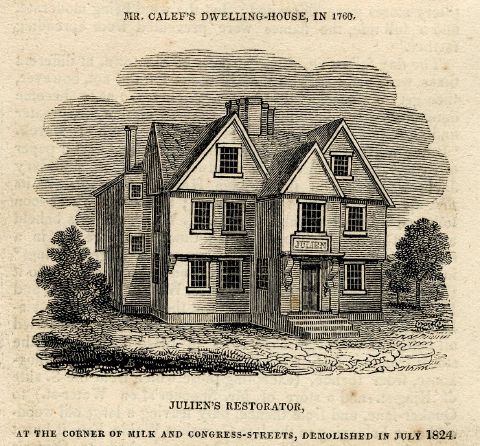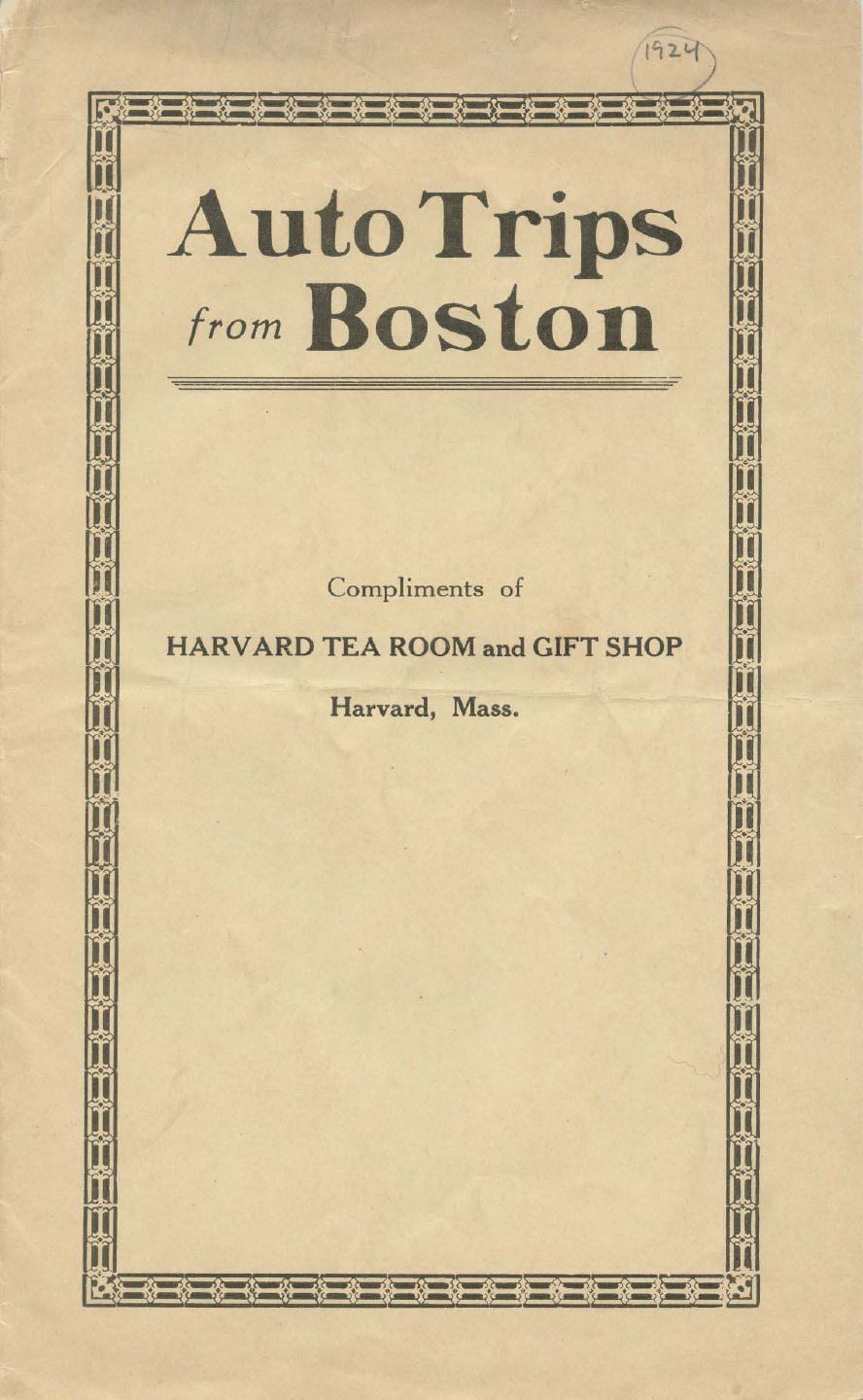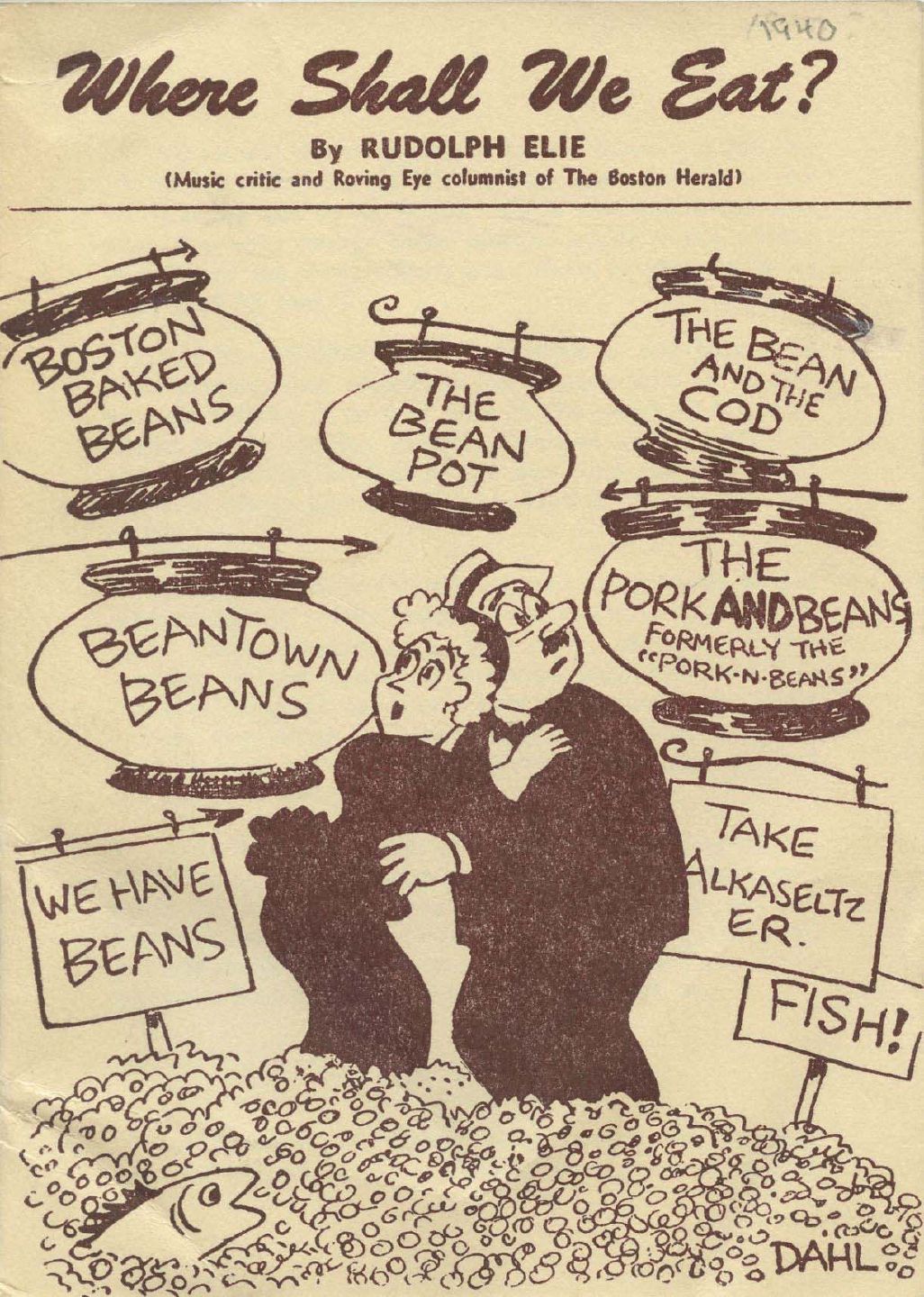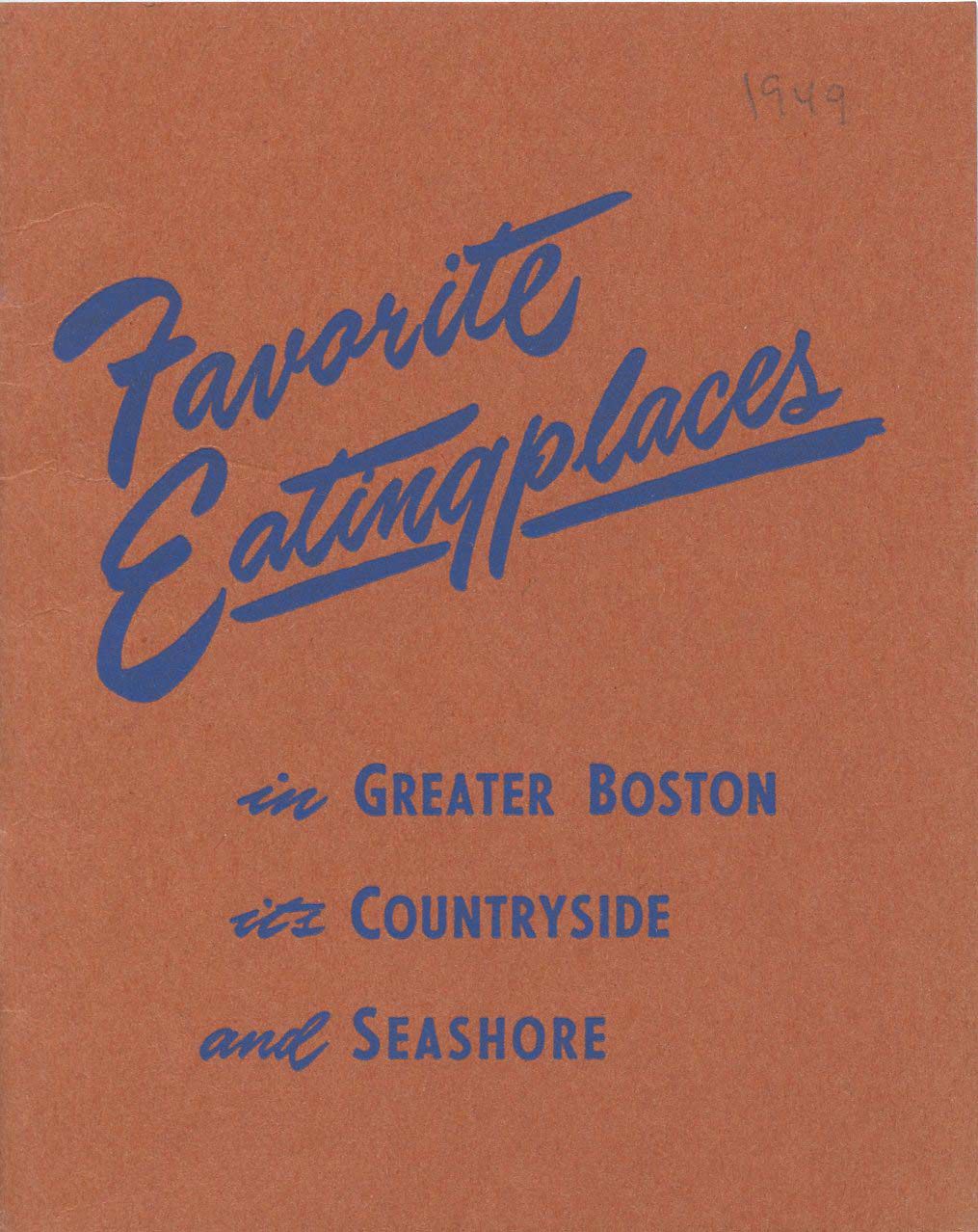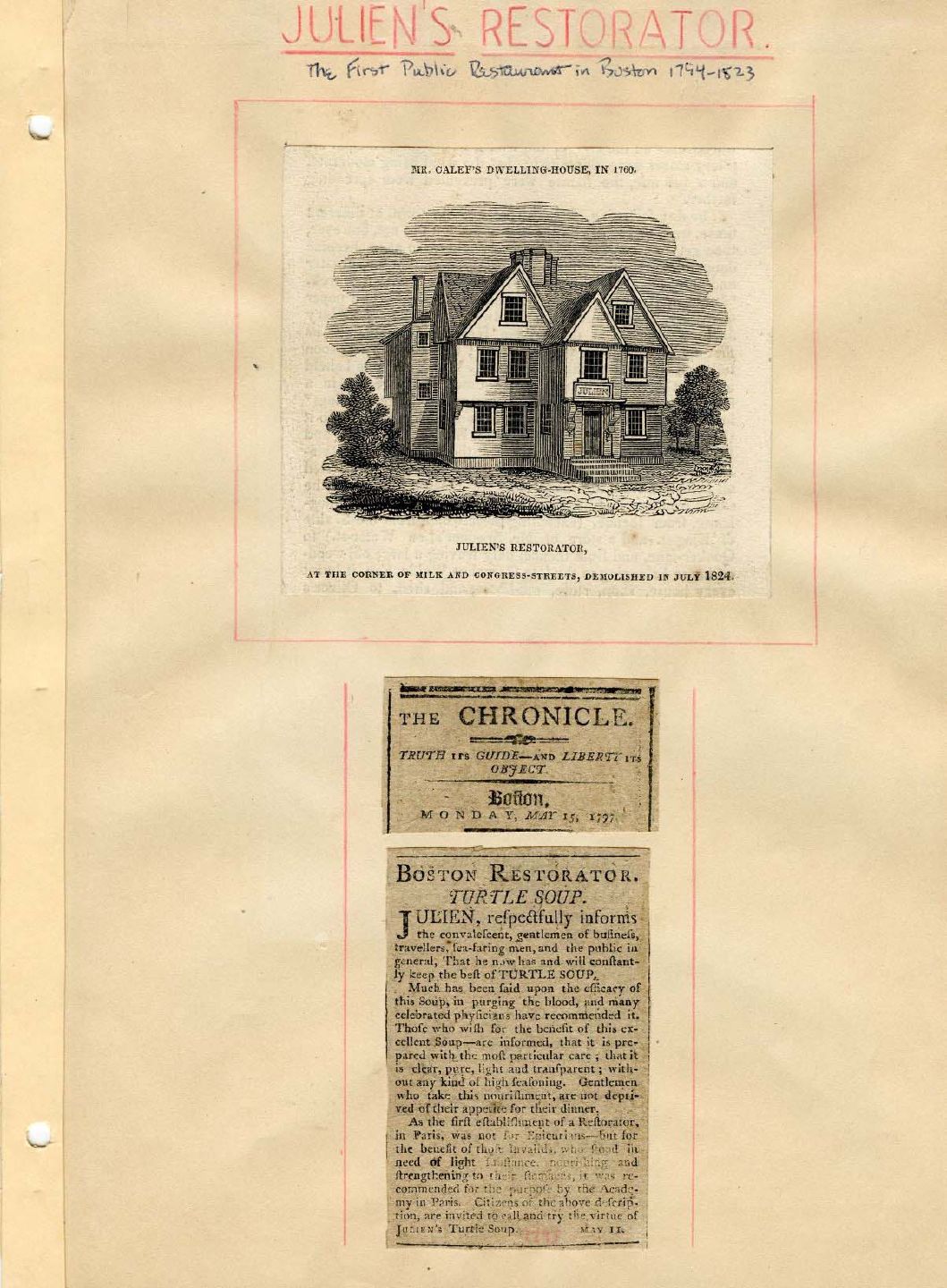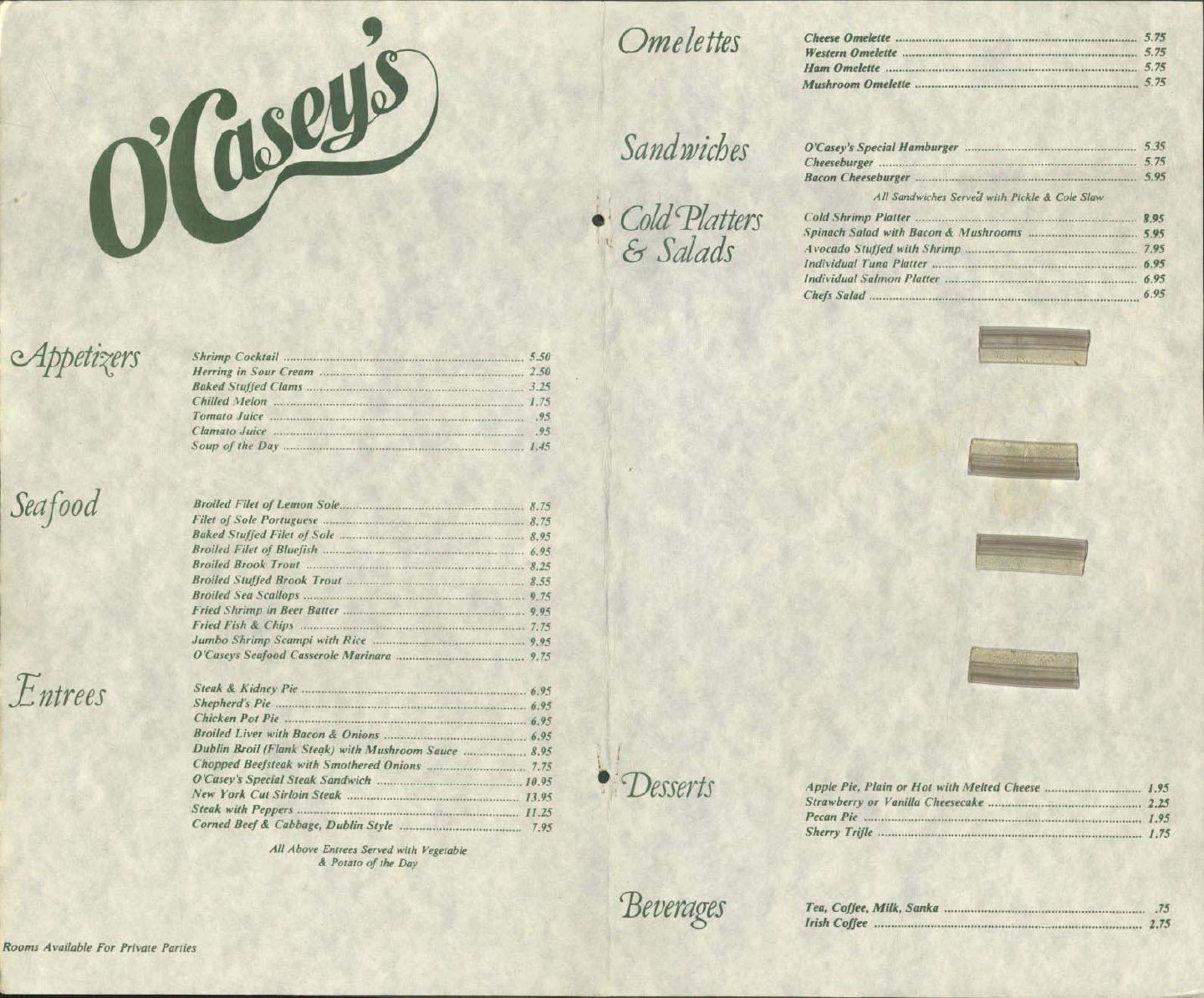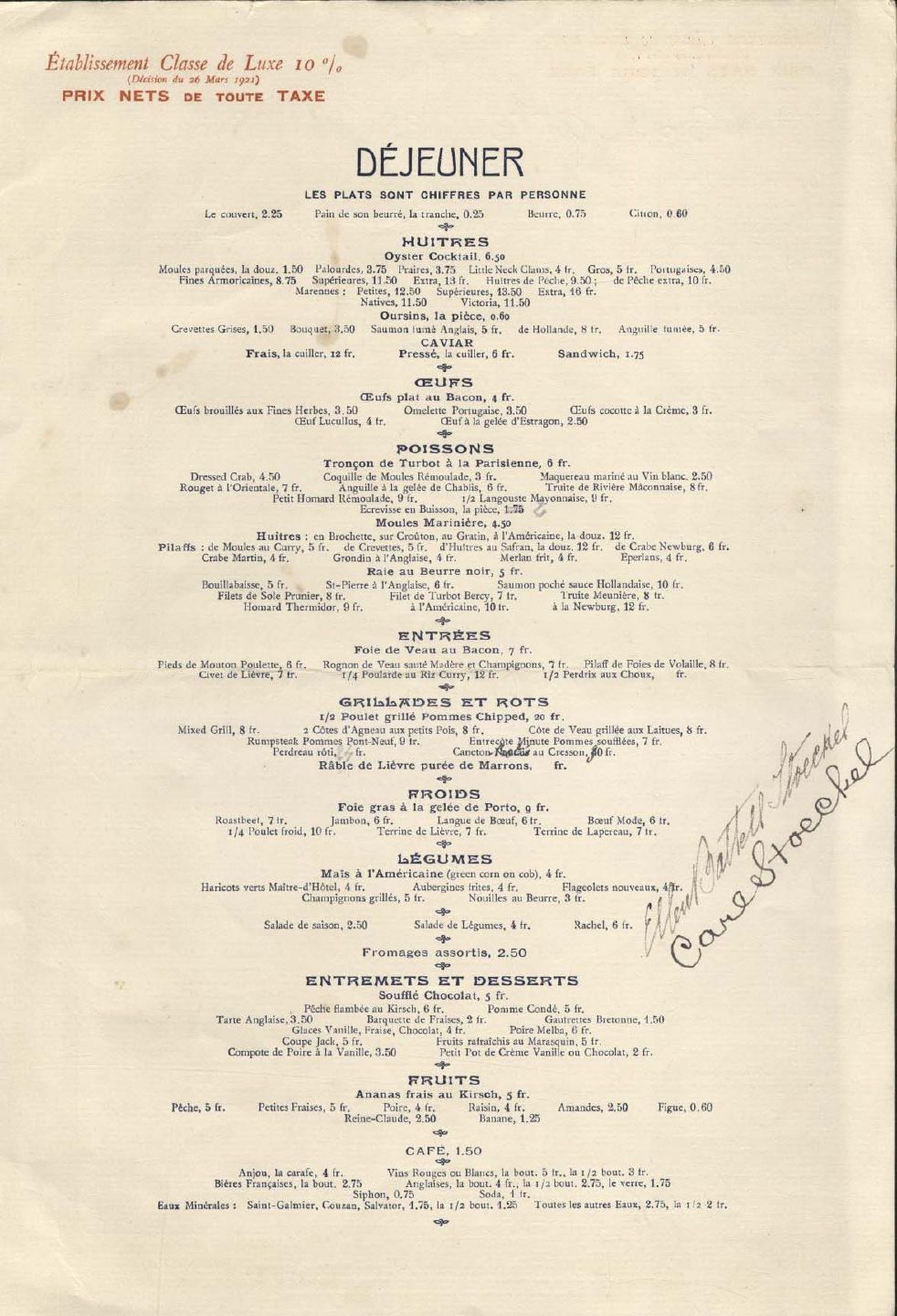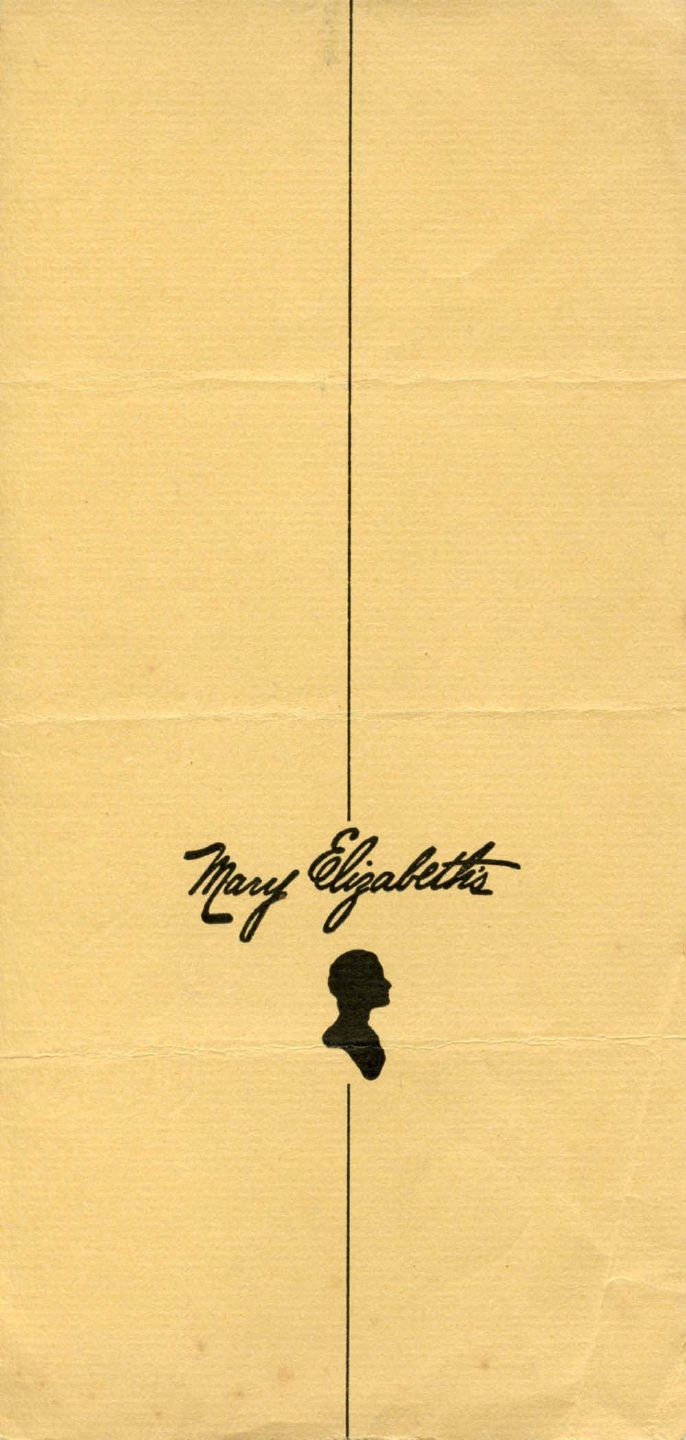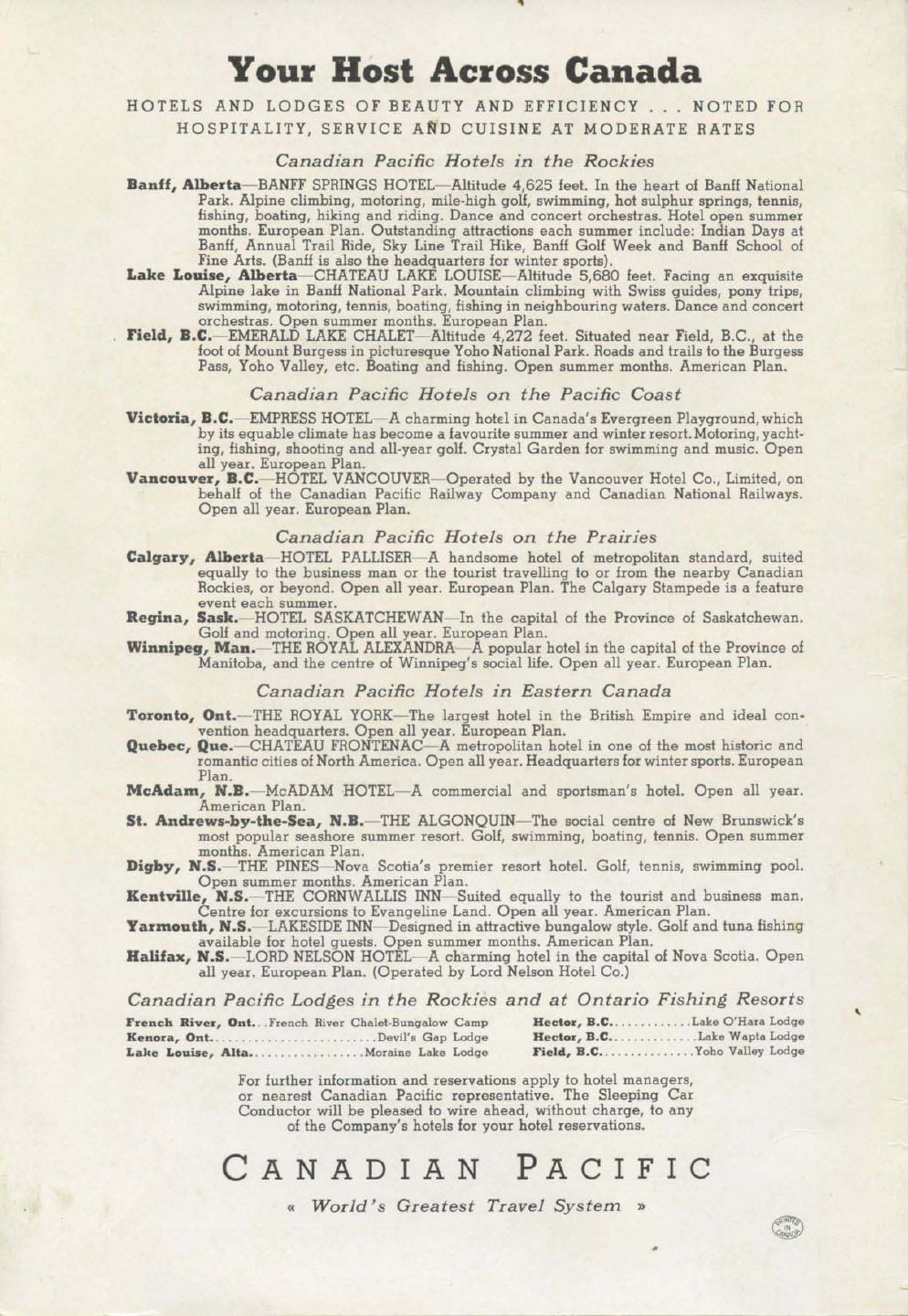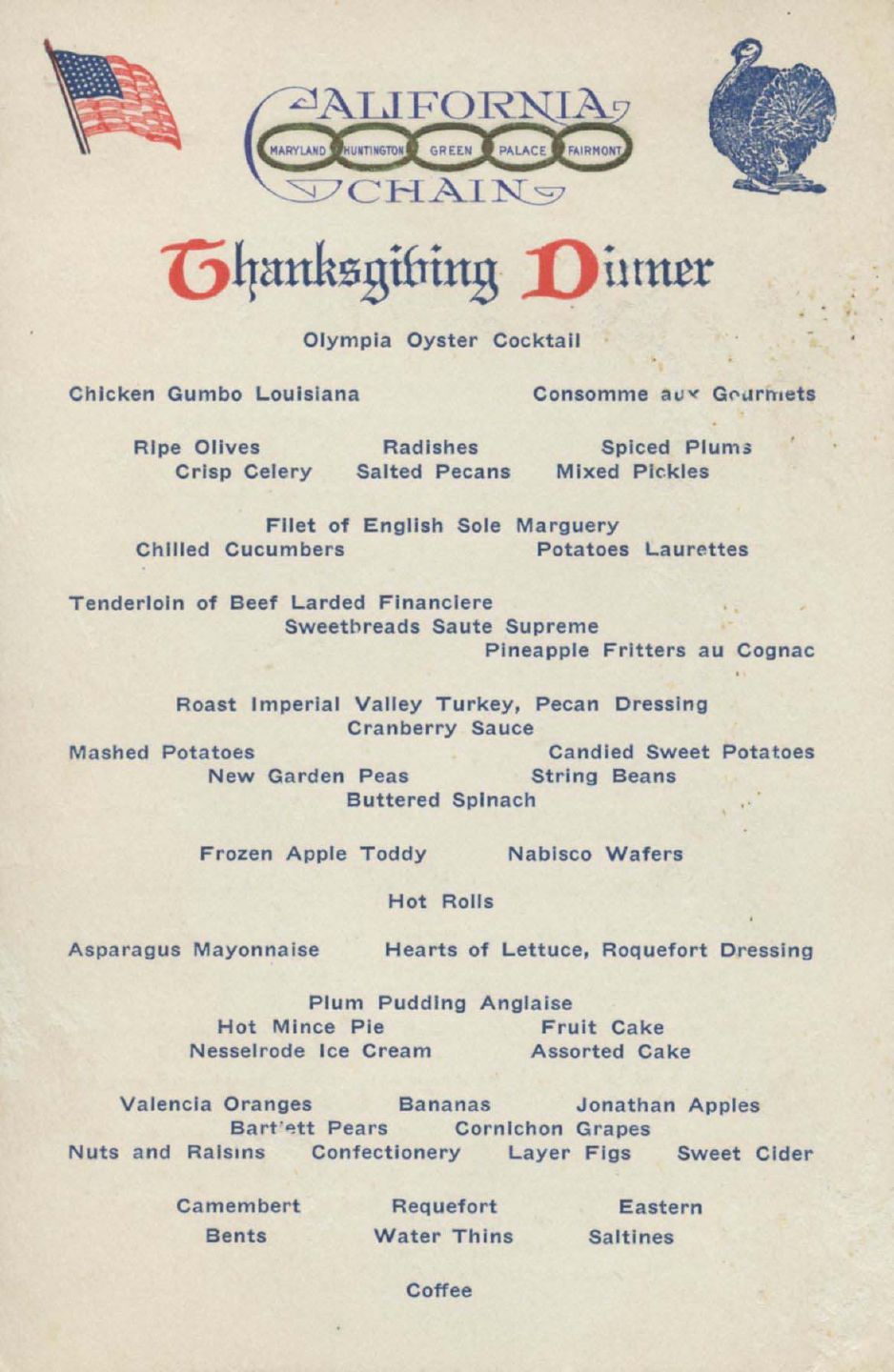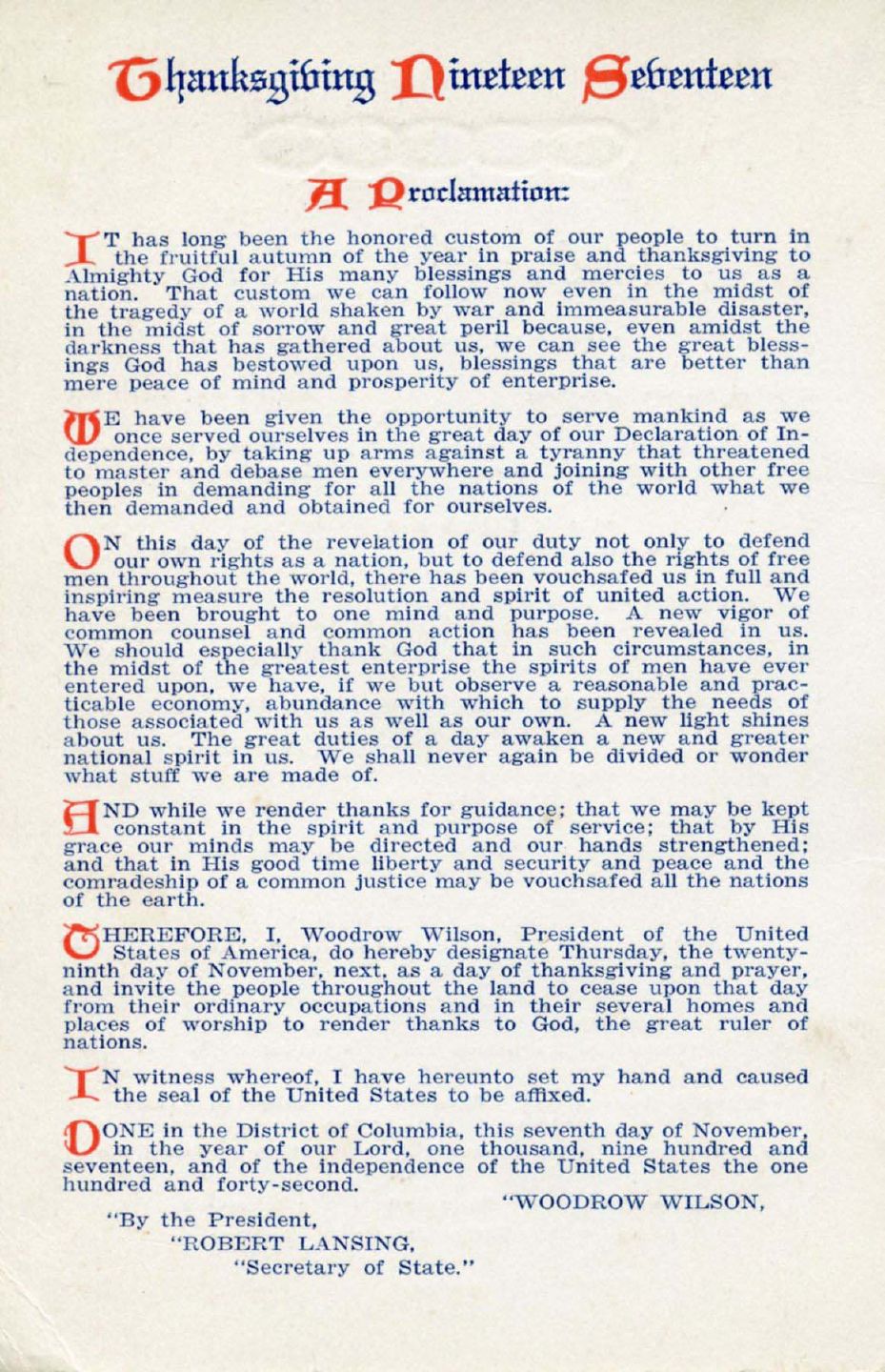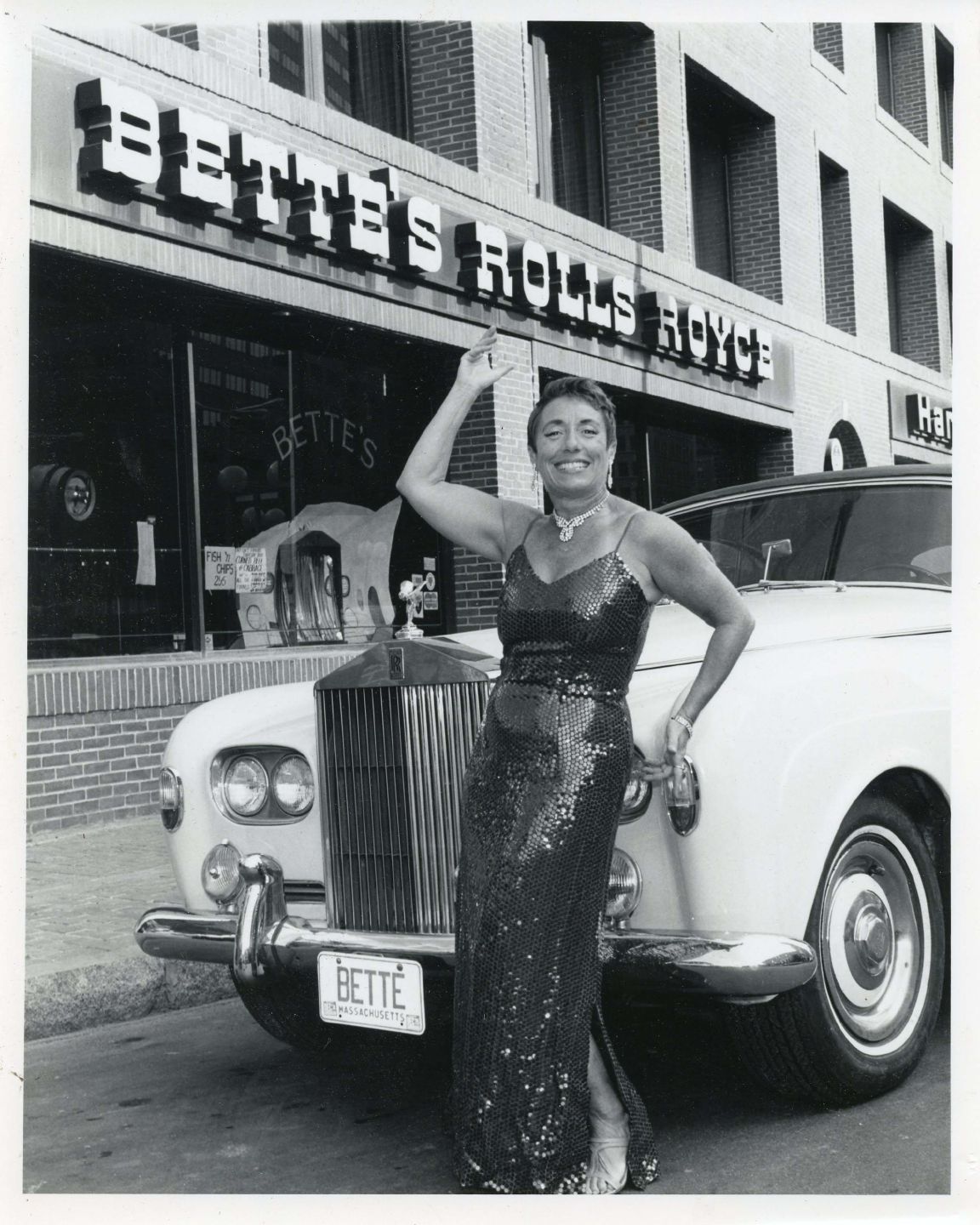Restaurants
Prior to the late eighteenth century, dining outside the home was uncommon and often viewed with some suspicion. Those who did eat in public establishments were usually traders and merchants traveling for business, eating at inns and hostels that offered few choices of dishes.
The restaurant as we know it today emerged in Paris in the late 1700s as a place for those with delicate constitutions to sip medicinal soups, known as restaurants, or restoratives. By the late 1800s the restaurant had become a fashionable place to see and be seen. Choice of food was a part of the restaurant concept from the start, necessitating a menu. To begin with, menus were often single bills of fare, often chalked on a board and placed in a prominent position for patrons to view.
As restaurants grew larger and the number of dishes offered also grew, individual handwritten and printed menus were introduced. Early Parisian menus were a large single page, with early printed menus resembling a sheet of newspaper. Then, a small leather bound booklet became fashionable, held together with cord. This was followed by the return to a single printed page menu, smaller and often decorated with illustrations in the style of the day, such as Art Nouveau menus decorated with botanical designs.
In the rapidly growing cities of nineteenth-century America, a wide range of restaurants existed, catering to everyone from the wealthy to the very poor. At inexpensive restaurants catering to workers, menus were short, simple and written in English, while the restaurants catering to the elite were modeled after French designs, usually with the names of dishes written in French. Menu design favored a small single sheet of paper or a small booklet containing a folded sheet of paper.
In the twentieth century, menus grew larger, especially during the 1930s, when the trend was quite pronounced. In the mid-twentieth century, as fast food restaurants, diners and drive-ins became widespread, menu design shifted to reflect a more popular and informal ethos. Menus appeared in the shapes of cars or other objects, and dishes with humorous names became common. Often, too, menus returned to their original place on chalkboards or mounted on walls; this was especially true at diners or drive-ins where menus would often be displayed on a large sign by the counter or order window.
Even as menus grew large and unwieldy, diners continued to collect them as keepsakes commemorating a particular meal, a trip, or a special occasion. Many menus arrive in the archives as a part of a person’s papers or an institution’s records and are preserved in collections as collateral ephemera. However, they are useful documents in their own right for food historians, sociologists, and graphic designers.
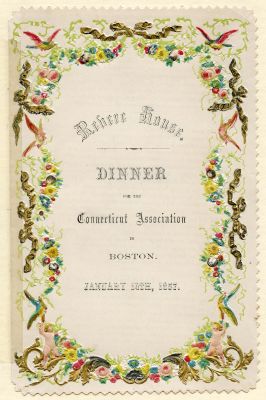
Revere House dinner for the Connecticut Association in Boston menu, January 14, 1857
Box 12, folder 1, Ellerton J. Brehaut Boston history collection, (MS2008-016).
Restaurant Guides
Restaurant guides were around long before Zagat’s was established in 1979, or before Yelp was founded in 2004. The examples shown were intended to help travelers in the Boston area, whether they were day-trippers venturing out from Boston in the 1920s as automobiles became more prevalent, or newly affluent postwar tourists enticed into Bay State eateries by Boston Visitor’s Center publications in the 1940s.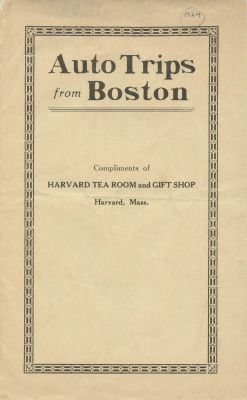
Cover
Auto Trips from Boston. Boston: Fred A. Tubbs.

Interior
Auto Trips from Boston. Boston: Fred A. Tubbs.
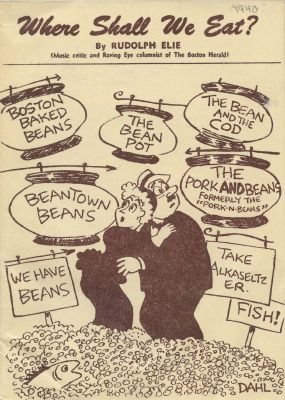
Where Shall We Eat?by Rudolph Elie, 1940.
Box 12, folder 2, Ellerton J. Brehaut Boston history collection, (MS2008-016).
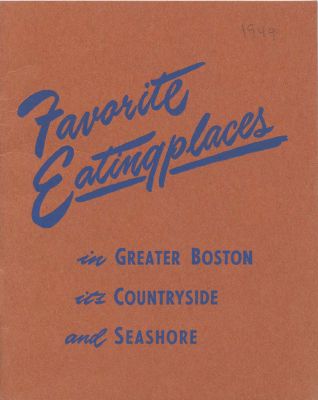
Favorite Eating Places in Greater Boston, its Countryside and Seashore. Boston: Convention and Visitors Bureau, Boston Chamber of Commerce, 1949
Box 12, folder 2, Ellerton J. Brehaut Boston history collection, (MS2008-016).
Julien’s Restorator
Julien’s Restorator was one of the first restaurants in Boston, opened in 1793 by Frenchman Jean Baptiste Gilbert Payplat dis Julien. Famous for his soups and stews, especially for turtle soup and soup julienne, Julien stressed the health benefits of his menu. Perhaps to mollify staid Bostonians, he also noted that no gambling or hard spirits were allowed on the premises. Julien died in 1805 and the restaurant was run by his wife before closing in 1823.
Julien’s Restorator scrapbook page
Box 12, folder 3, Ellerton J. Brehaut Boston history collection, (MS2008-016).
O’Casey’s
O’Casey’s restaurant in New York was named in honor of Seán O’Casey (1880-1964), the Irish playwright. It is a rare example of a more modern restaurant menu in our collections, dating from the 1980s.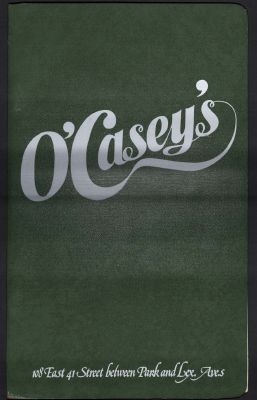
O’Casey’s menu, circa 1980s
Box 38, folder 19, Robert G. Lowery papers and collection of Sean O’Casey, (MS1996-025).
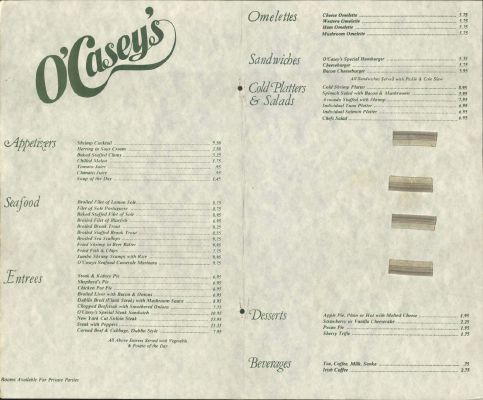
O’Casey’s menu, circa 1980s
Box 38, folder 19, Robert G. Lowery papers and collection of Sean O’Casey, (MS1996-025).
Alfred Noyes
British author Alfred Noyes (1880-1958) traveled frequently on lecture tours, and collected menus from his trips. Those collected here range from Canadian train dining car menus to French wine lists to New England tea room bills of fare, dating from the 1910s-1930s. Noyes also annotated his menus or had attending celebrities sign them; see the Literary Luncheons portion of this exhibit for more examples.
Establissement Classe de Luxe menu, September 1922
Box 120, folder 9, Alfred Noyes papers, (MS2006-054).
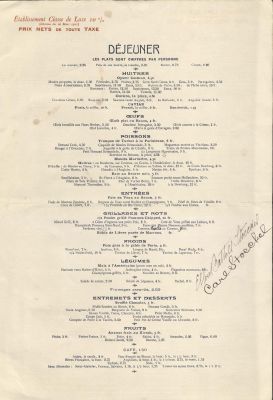
Establissement Classe de Luxe menu, September 1922
Box 120, folder 9, Alfred Noyes papers, (MS2006-054).
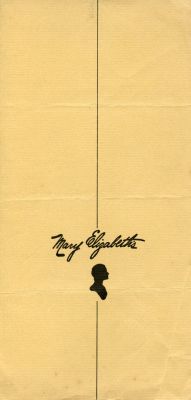
Mary Elizabeth’s afternoon tea menu, November 25, 1932
Box 120, folder 9, Alfred Noyes papers, (MS2006-054).
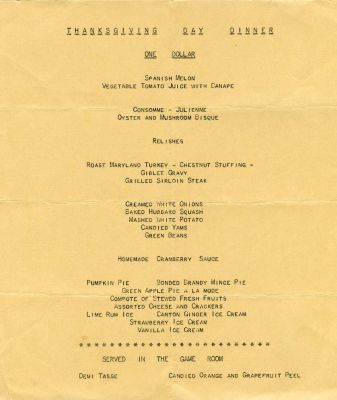
Mary Elizabeth’s afternoon tea menu, November 25, 1932
Box 120, folder 9, Alfred Noyes papers, (MS2006-054).
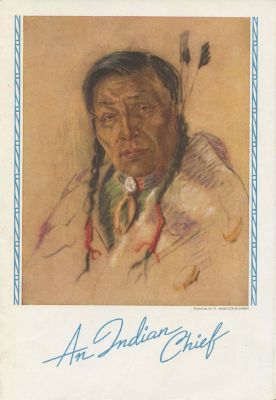
Canadian Pacific dining car menu, circa 1930s
Box 120, folder 9, Alfred Noyes papers, (MS2006-054).

Canadian Pacific dining car menu, circa 1930s
Box 120, folder 9, Alfred Noyes papers, (MS2006-054).
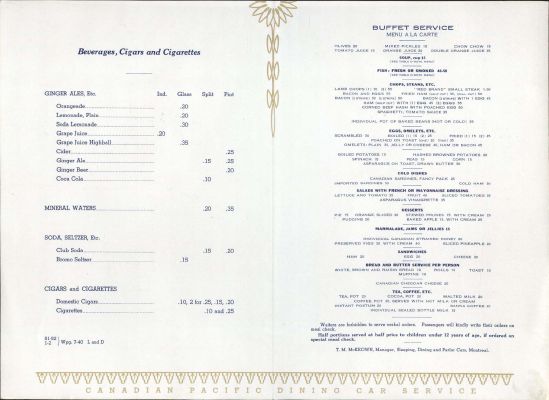
Canadian Pacific dining car menu, circa 1930s
Box 120, folder 9, Alfred Noyes papers, (MS2006-054).

California Chains Thanksgiving luncheon menu, 1917
Box 120, folder 9, Alfred Noyes papers, (MS2006-054).
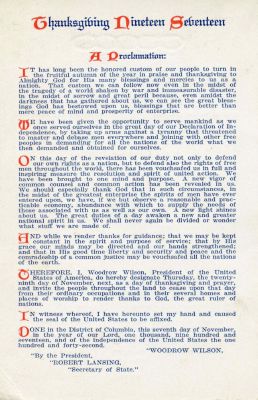
California Chains Thanksgiving luncheon menu, 1917
Box 120, folder 9, Alfred Noyes papers, (MS2006-054).
Bette’s Rolls Royce
Bette’s Rolls Royce was a popular restaurant near Faneuil Hall in the 1970s. Owned by Bette Arnold and advertised by her bright yellow (and illegally parked) Rolls Royce out front, Bette’s Rolls Royce promised Bostonians “the best fun, the best food, and the best booze in town!” and frequently delivered on that promise. Bette’s Rolls Royce was as renowned for its flamboyant owner as it was for cuisine. Bette herself serenaded customers with renditions of popular songs on weekends, and she appeared perched on the hood of the Rolls Royce in many city parades.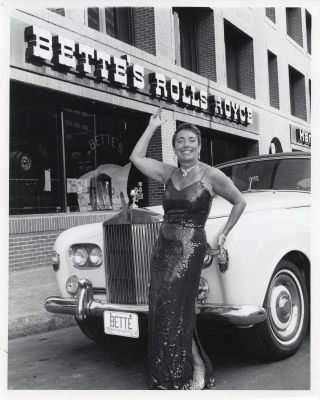
Bette Arnold with her yellow Rolls Royce, circa 1970s
Box 3, folder 4, Bette Arnold collection of Bette’s Rolls Royce restaurant materials, (MS2012-009).

